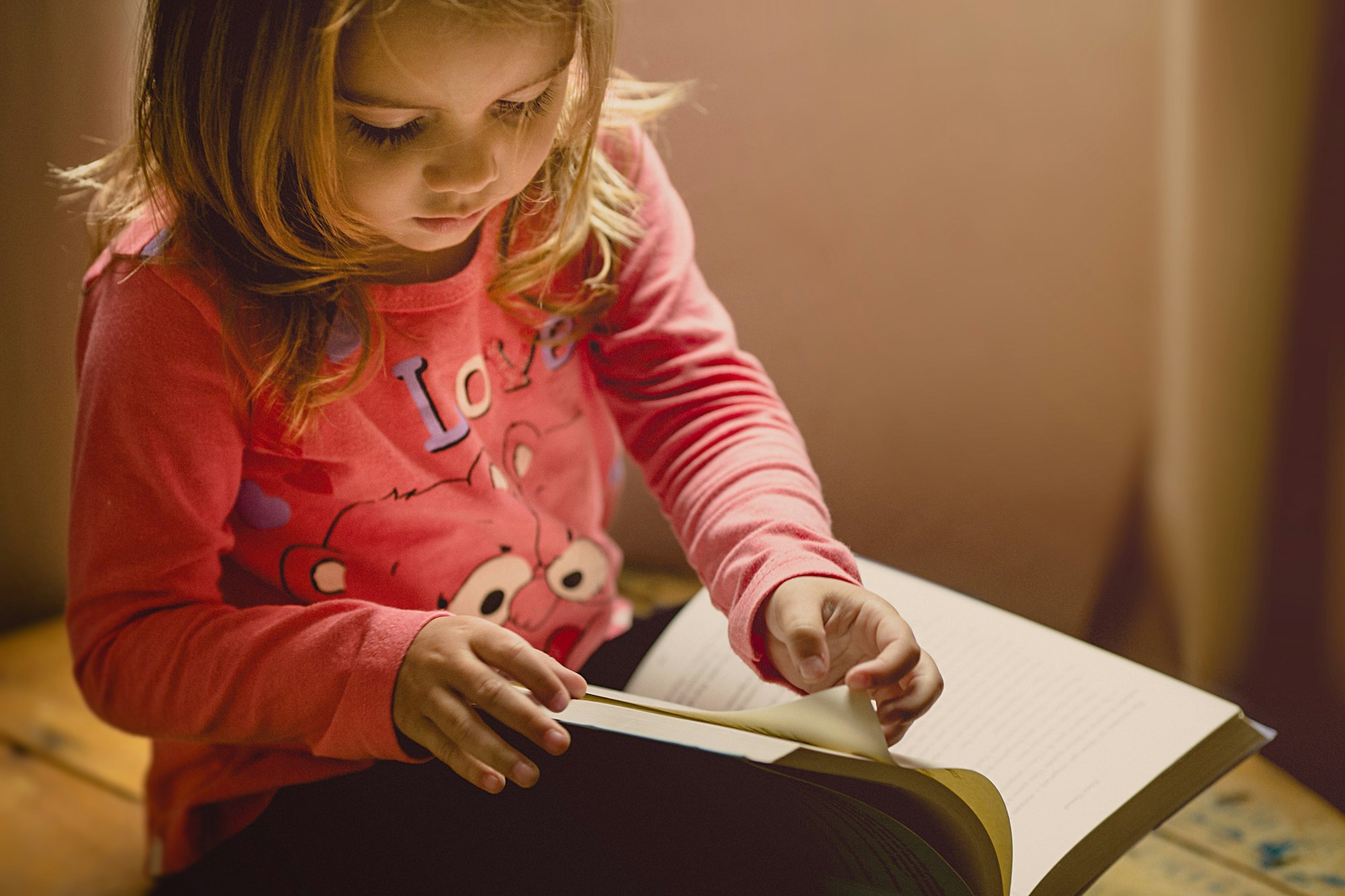Books scattered across the floor, storytime giggles echoing in a corner, or a child’s small finger tracing brightly coloured letters—scenes like these draw out a question for many parents: what exactly is the Importance of reading in child development? Confronted with endless advice, it’s natural to wonder if reading together is truly as transformative as suggested—especially when balancing demanding routines or when your child seems less than enthralled by printed pages.
Consider, for a moment, this: research in paediatric neurodevelopment is unequivocal. The first three years of a child’s life see more than 80% of brain structures formed—neuronal connections multiplying at astonishing speeds. Reading aloud, at any age, interlaces sound, rhythm, and meaning, laying neural foundations for future learning, memory, and emotional wellbeing. Far beyond improving school grades, it carves out imaginative landscapes, strengthens social skills, boosts vocabulary acquisition, and creates family rituals that signal warmth and security.
What challenges might prevent your child from embracing this journey? Whether access to books is limited, reading feels intimidating, or learning differences create hurdles, solutions abound—and the ripple effect remains immense. The following sections unfold practical insights for nurturing a lifelong bond with books, whether you’re holding a tiny board book or discussing novels with a pre-teen. Let’s see why the Importance of reading in child development is not a distant ideal, but an everyday reality you can foster.
Why Reading Makes a Difference: Brain, Language, and Beyond
Imagine a child listening intently as you read about animals in a jungle, or rhyming along with a playful poem—these small moments fuel exceptional vocabulary development and spark a cascade in language acquisition. Children exposed to abundant language absorb thousands of new words before even stepping into school—some studies show over a million word exposures for those read to daily.
But it’s not just about language; reading stories or picture books actively supports cognitive development, integrating memory, attention, and even reasoning skills. When children hear varied sentence structures, idioms, and expressions, synaptic pathways strengthen, making it easier to connect ideas and draw meaning from the world. Short bursts—think five minutes with a pop-up book—can be as significant as lengthy, immersive chapters.
Let’s not overlook the nuance here: print awareness—the recognition that words and symbols carry meaning—begins the moment your child sees you turn a page or trace letters. In paediatric speech therapy, repetitive reading is often employed to encourage articulation and listening. Why repeat the same story twenty times? Because familiarity cements working memory and helps internalise linguistic structures.
Imagination, Creativity, and Navigating Emotions
How can you support your child’s ability to imagine distant worlds or invent their own stories after the book is closed? Readers become architects of fantasy—every description, dialogue, or dramatic twist is a toolkit for building creativity. When a child visualises a lion’s cave or pretends to be a pirate, they are rehearsing the very skills—role-play, problem-solving, and creative expression—that will support them through schooling and later, social interactions.
Classic moral tales, often passed down in many homes, introduce children to cultural awareness, values, and ethical challenges in a context that is safe and relatable. Notice how a child responds when reading about a character’s dilemma or setback. Books not only soothe everyday worries—worry over a lost toy or a fight with a friend—but also reassure, “You’re not alone in feeling this.”
The emotional intelligence cultivated here is far from trivial. Empathy blooms when children start asking, “How is the monkey feeling after his banana was stolen?” Encouraging discussions around stories, especially when your son or daughter can relate to a character’s feelings or choices, can provide a gentle way to explore otherwise tricky topics.
Social Bonds and Self-Esteem: The Quiet Strength of Shared Stories
It’s easy to overlook the power of a regular bedtime story, but multiple studies in family health and development point to shared reading as a foundation for positive parent-child relationships. When you pause at a funny scene, exaggerate voices, or let your child choose the next book, you reinforce attachment and foster a secure base for exploration.
Group reading—whether in classrooms, libraries, or among friends—builds a sense of belonging. Children learn turn-taking, negotiation (“Who reads first?”), and emotional regulation, skills that extend far beyond books. Importantly, letting your child select books based on interest—be it dinosaurs, cars, or fairy tales—empowers choice and autonomy, fuelling self-esteem and a genuine love for learning.
For children who struggle with reading or face learning differences (for instance, dyslexia), alternatives such as tactile books or audiobooks maintain engagement and build confidence. Even wordless books, where the reader invents the story from illustrations, provide a rich platform for imagination.
Practical Strategies: Age-Appropriate Tips and Adaptation
Infants (0–2 Years)
Introduce board books with vibrant images, high-contrast patterns, and simple textures. Sessions need not be long—a few minutes at a time are enough. Naming objects and describing actions in playful tones—sometimes even singing—encourages early listening and communication skills.
Young Children (3–5 Years)
Picture books, fun rhymes, and short, relatable stories hit the sweet spot for this age. Dialogue, repetition, and inviting your child to “finish” familiar phrases all support letter recognition and memory.
School-Age (6–12 Years)
Balance periods of independent reading with discussions around themes, characters, and real-world connections. Graphic novels, illustrated encyclopaedias, and fantasy adventures all have a place. Encourage setting reading targets—not as pressure, but as shared family goals. Ask reflective questions: “Why do you think the main character chose that path?”
Choosing and Customizing Books
Durability matters for infants; colour and engagement for preschoolers; diversity of genres for older readers. Let your child’s curiosity steer the way and adapt stories to their current interests—science, space, poetry, or traditional tales.
Fostering Positive Reading Habits at Home
- Keep books within easy reach—not just on high shelves.
- Designate a corner or routine time for reading: after dinner, before bed, or as part of a weekend ritual.
- Reduce background media noise; even a short daily session works wonders.
- Utilize community resources—public libraries, book swaps, or school reading circles—to rotate fresh choices.
Parental modelling is simple yet profound. If your child sees you reading (a novel, newspaper, even a recipe), curiosity follows. Share discussions about your own reading, and ask open-ended questions: “What do you think might happen next?”
Supporting Reluctant and Diverse Readers
Every child journeys toward reading at their own rhythm. Some adore books instantly; others need coaxing. Explore a range—comics, magazines, stories in different languages, or digital formats. Celebrate micro-progress—whether it’s listening to a story, flipping through pictures, or answering a single question.
Encountering barriers? Sensory books, audiobooks, and visual storyboards offer multi-sensory engagement, especially helpful for children with learning differences. Difficulties accessing traditional formats? Communities and organisations now provide digital libraries, free audiobooks, and even tactile story experiences.
Digital Tools and Screen-Based Storytelling
E-books and audiobooks can supplement—not replace—shared reading. Choose interactive digital books that invite participation, and limit screen exposure according to paediatric recommendations. Screen-free story consoles, allowing children to “tap” and trigger sounds or games, add novelty and support early fine motor skills. Technology, when thoughtfully selected, honours your child’s pace and interests; but print-based, face-to-face reading remains central.
The Importance of reading in child development persists across every age and context, from print to digital, picture book to novel, solitary reading to family storytelling.
Key Takeaways
- The Importance of reading in child development lies in how it shapes cognitive skills, emotional maturity, social understanding, and academic readiness.
- Early and consistent exposure to books supports language development, attention, critical thinking, and memory—essential for learning.
- Reading stories nourishes empathy, self-esteem, and cultural awareness, while shared rituals strengthen family connections.
- Adapting reading experiences to children’s ages, abilities, and interests—whether through print, audio, tactile, or digital options—increases motivation and enjoyment.
- Reluctant or struggling readers benefit enormously from alternative formats, patient encouragement, and sensory engagement.
- Resources and healthcare professionals are available at every step for parents facing challenges or seeking advice on reading or development.
- To access personalised health advice, tips, and free child health questionnaires, you can download the application Heloa.
Questions Parents Ask
How can I encourage my child to develop a love for reading if they aren’t showing much interest?
It’s absolutely normal for some children to be less attracted by books at first. Try introducing a variety of materials—comic strips, magazines, stories based on their favourite television characters, or topics they’re passionate about. Read aloud together, even if just a little; try audiobooks or let your child choose what seems interesting. Keep things relaxed and enjoyable—maybe create a cosy reading corner or make reading part of another routine, like bedtime. Sometimes, just exploring the pictures or talking about book covers is enough to spark curiosity. These little steps can slowly anchor reading as a cherished daily habit.
From what age should parents begin sharing books with their child?
Beginning to read with your child from the earliest months is highly recommended. Even newborns gain from listening to your rhythms and seeing bold images. High-contrast patterns and gentle, musical stories capture attention and foster an early sense of security. Such exposure builds the groundwork for later language and communication skills. There’s no “too soon” or “too late”—read whenever you both are ready.
What to do if my child appears to struggle with reading more than their peers?
Each child follows their unique path to reading. Some take longer and need a little more encouragement. The focus should remain on support, not pressure—enjoy stories together, talk about pictures, and celebrate every effort, however small. Persistent struggles—such as difficulty in recognising words or following the story’s flow—may warrant a conversation with your child’s teacher or a speech-language specialist. Techniques like audio stories, illustrated books, and multi-sensory formats help many children find their reading confidence. Remember: with patience and the right resources, enjoyment—and success—with reading is always within reach.









